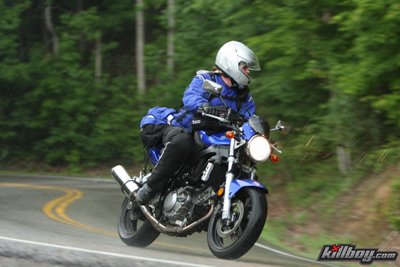Types of Motorcycles
So, you think you want a motorcycle, huh? Ok, so - which kind?
There are more than a few, and they all have their respective strengths as well as relativeness weaknesses at specific things.
Here’s a quick rundown of the general types - overview, pros and cons of each.
Cruisers
.These are the bikes that come to mind when watching anything from older movies, to big bike rallies, Easy Rider (although theirs are specifcally ‘choppers’ and for many - it’s what they think of.
Harley Davidson as well as Honda, Yamaha, Kawasaki and others all make cruisers of some kind, with some of the ‘clones’ (Honda, Yamaha, etc.) being quite reliable and decent bikes.
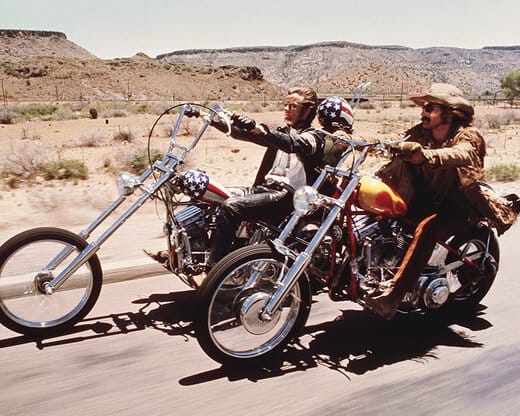
Cruisers - Manufacturers and Models Overview
Harley Davidson is the one most Americans think of, and they indeed have a ton of models - pretty much all they make are cruisers, or their bigger cousins - touring bikes. They are a premium price brand in comparison to Honda, Yamaha and others, but for some - if they’re going to have a cruiser, it has to be a Harley.
Meanwhile, Honda has built up quite a following with their Honda Shadow line, Kawasaki has a similar Vulcan lineup, and Yamaha has their Bolt model. Honda and Yamaha both have more beginner-suitable cruiser motorcycles as well.
There are a handful of other scattered offerings out there that aren’t IMO quite cruisers. I’ve ridden Shadows before and have to say, while cruisers aren’t my thing - that was quite a nice motorcycle overall.
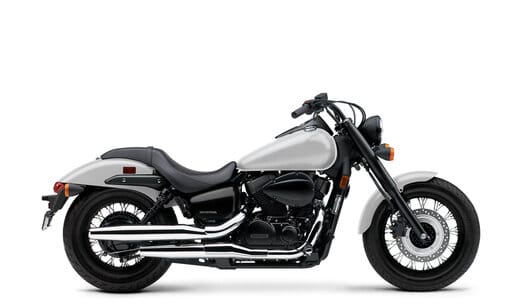
Cruisers - what they do well and not so well
Cruisers are meant for, as their name implies - hours to days of, well - cruising. They aren’t particularly fast, and they are on the somewhat heavy side, and compared to other types of motorcycles, they also aren’t particularly nimble at carving up turns.
However - they can be geared out pretty easily for a multiple day trip, and nearly all have seat options or come from the factory ready to ride with a passenger (‘pillion’). Their weight makes them a bit more challenging for slower speed navigation, and while they don’t turbn nearly as quickly as other types, or brake as quickly - they make for a fairly comfortable ride and are stable on the highway or cruising down the boulevard, including adding a set of saddle bags to the rear for trips.
They also have relatively low seating positions, which can help to make them easier and more confidence-inspiring for beginning and shorter riders.
Cruisers - beginner bikes
There are really only two sane options here in my opinion, or at least two manufacturers if someone is starting with a cruiser. A Honda Rebel or Yamaha V-Star 250.
Honda has been making starter bikes for…..a long time. They make Rebels in 300cc and 500cc models, while the V-Star comes in a 250cc model. The 250cc and 300cc models are more suitable for beginners of either sex, while the 500cc IMO is better for someone with a bit of riding experience before jumping on.
Both bikes can do highway speeds in the 85MPH-95MPH range, depending on the load on the bike, and are heavy enough at 350-400# to generally be ok for some highway use.

Standards, Nakeds, ...
This one is a bit of an oddball to some. It both goes back to the original motorcycles as well as a concerted discrete category for some manufacturers today.
Standard refers to the seating position and controls - unlike cruisers, which tend to have a low seat and somewhat stretched out seating position, or sport bikes where the rider is typical leaning forward, at times almost laying down, standards have a natural, relatively upright seating position, and it is somewhat of a do-most-things sort of bike.
This is almost more of a catch-all category, as some nakeds like the Suzuki SV650 Naked, are a more upright version of their sport variant SV 650. But don’t let this fool you - some of these bikes are wicked fast - many completely unsuitable for beginners, although there are some options there as well. Some of these types of bikes also straddle other categories, like Adventure or some dual-sport bikes like the Kawasaki Versys and others.
The Ducati Monster Triumph Street Triple and others continue to grow the offerings in this broad category.
Suzuki has a full line-up of standards - the SV Bandit, Katana and others.
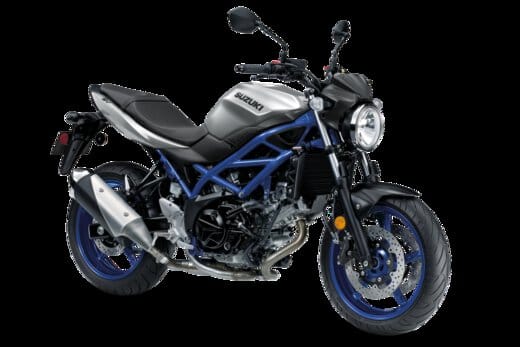
Standards and Nakeds - what they do well and not so well
The standard category almost by definition is a broad one, as it’s primarily focused on the style and seating position.
The more upright seating position allows for a more comfortable ride over time, and may be more confidence-building as well as more comfortable for beginning or even riders with back problems. They can serve as great commuter bikes, or by adding a tank or rear bag or pannier setup, be kitted out for longer-distance trips.
In general, they are lighter than cruisers as well as being moderately to very nimble and agile - depending on the model. The SV650 is a popular track motorcycle, for example.
Chances are you can find a standard-type layout across most of the other categories other than the ‘pure’ sport bikes (although some still do have a naked and more upright option) or cruiser category. It’s worth considering the types of rides you plan to be doing as well as your own relative comfort level - while some can take a sport bike on a cross-country, a standard or other type of bike is more suitable for those kinds of trips.
Standards and Nakeds - beginner bikes
This one is tough, as the category spans other types of bikes and a significant range of performance characteristics.
Having said that, some models are extremely fast, high performance machines and these models should not be equated with ‘beginner bikes’ by any means!
I’d take a look at the Honda CB300F or CB500F for those with some existing experience for starters. Note the F models and R models are different layout bikes in the CB series.
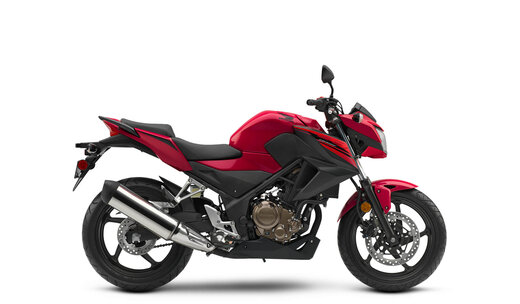
Dirt bikes and dual-sports
These two are going to be arguably unfairly linked together.
Why unfairly - well, dirt bikes and their cousins (enduro, trail bikes, ..) are all inherently not street legal. They are bred for very specific purposes, and while they can be a whole lot of fun on the road, they aren’t legal on-road. In some cases, you can ‘convert’ a pure off-road bike to be registered and plated, but that’s better left to people a while lot less likely to be reading this article. :) If you’ve got a truck and nearby places to legally ride off-road - you may want a dedicated dirt bike.
Dual-sports, on the other hand - fall into a fairly wide range, from manufacturers modifying their off-road bikes into something able to be ridden legally on the street, to some that have more on-road roots with some changes that they then brand as ‘dual-sport.’ I’m going to focus on the first category here, noting there is some bleedover between ‘dual sport’ and ‘adventure’ motorcycles, but to me - a dual-sport is a dirt bike than can be ridden on the streets, while an adventure bike is generally heavier and street-first, but can do some amount of dirt/off-road riding.
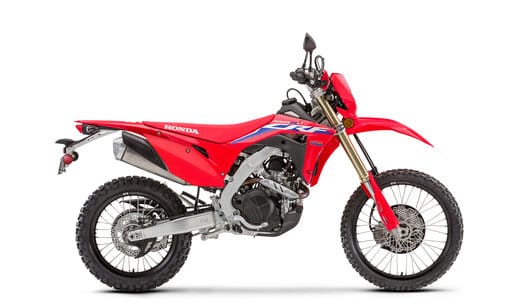
Dual Sports - Manufacturers
This should come as no surprise - the biggest names in dirt bikes ….also make true dual sports.
KTM, Suzuki, Honda, Yamaha, Kawasaki, and even Husqvarna - have at least one model out there. BMW also has a lineup but I consider them more adventure bikes than true dual-sports.
Fans of each brand will undoubtedly take some offense, but here’s my take. The KTM and Husky’s are perhaps the most pure ‘dirt bike with a plate and lights,’ but don’t have great points for reliability. Honda has a long history going back to the Paris-Dakar races in the enduro space, while most of the others have also, indeed - been in the game for some time. Kawasaki has one of the most recognized adventure bikes (the KLR), but is a bit weak on the dual-sport side of things, having only the KLX 230 and 250 models.
Suzuki, meanwhile - has the venerable DR series - the 200S and 650S (and older 350s), along with the DRZ lineup and the VanVan 200.
Yamaha also has some long-running series in the unique TW200, as well as the XT250 (and older 350s) and the WR250R.
Honda has a similar lineup in current bikes as Suzuki - a Trail 125, CRF (stronger pure dirt lineage) 250L and 450L models, and the XR650L.
Dual Sports - What they do well and not so well
Surprising no one, hopefully - most dual-sports are at least moderately to very capable off-road. With a plate on them, making them legal to ride to the dirt, go have fun, then ride back.
What they don’t do as well in general, with some few exceptions (the bigger dual-sports crossing the line into adventure bikes) is ride two-up or handle longer on-road trips beyond an hour or two well. Lack of storage, lighter weight, and tire selection all come into play on this one.
Dual Sports - Considerations and Beginner Bikes
This one is a bit difficult. The nature of true dirt, sand, mud and jumping machines means - make them light but strong, with long suspension, which makes them generally taller bikes.
Lighter bikes for the same power - accelerate well, but there’s a point at which they get blown around on the highway by simply having a truck pass by. Top-end speed is also often limited, especially on the smaller displacement bikes. I own and rode daily a DRZ-400S, and it is a competent and capable bike off-road, but like many of the larger displacement dual-sports, has a top speed around 87MPH, and once you’re at 70MPH or so, it’s a bit slow getting to the rest of that top end, while it too can be blown around a bit due to it’s relative lightness vs other bikes. I wish often for ‘one more gear’ on the DRZ and a few more HP/torque - I wouldn’t be taking it on cross-country trips, but as a highway commuter and fun bike, it would be just enough to make you have that extra bit sometimes needed to speed up and naviagate around on highways. I’ve also run a DR650 on and off-road in Costa Rica, and while it’s an older design and heavier bike, it felt a bit more highway capable as a result, while also being less true off-road capable (but workable).
Having said that, they are excellent ‘hooligan bikes’ to just go - wherever you want to. If your goal is limited to around town/local commuting, with some dirt and trails thrown in - almost any of the aforementioned models will do it and do it pretty well. They are great for around town then into the woods or trails, while anything with any real highway use and speeds of 70MPH or higher really push you into at least a 400cc bike or larger (or into an Adventure bike).
If you’re looking to really learn to ride dirt/trails/mud/etc. with some occasional on-road, the TW200 or XT250 are standouts for beginners, as the others are significantly taller bikes as well as having much more power, a combination which makes it easier to get into trouble.
One final note - if you plan on riding a dual-sport for any length of time, particularly on-road - you will very likely want to invest in a replacement seat.
Sadly, there still is no one single motorcycle to ‘do it all'
Adventure Bikes
This one is another fairly broad range of motorcycles, essentially offering standard-type controls and riding positions, but with varying levels of dirst capabilities ranging from ‘almost a dual-sport’ to ‘a street bike with knobby tires and some guards on it’ and everywhere in-between. They also tend to be more trip-worthy for longer trips. In general, this is the type of bike most take on various ‘around the world’ and similar type trips. Indeed, I rode across the Dominican Republic, twice, on a Suzuki V-Strom 650, including some beach and off-road riding - although I consider that bike in general to be more road-oriented than off-road.
If a dual-sport just isn’t doing well-enough on the road or highway, or you want to do longer trips with on-road components to them, while still keeping some to a moderate level of dirt-worthiness, the Adventure category of bikes may be the one for you.
Personally, I’ve waffled across several models for years, trying to find that one ‘good enough all around’ compromise, but they are all indeed just that - compromises. Dual-sports are more capable off-road with better and longer suspensions, which makes them better off-road but worse on pavement at speed or duration, while adventure bikes usually have more power, less suspension travel, and are heavier - better on-road but at a price of off-road performance.
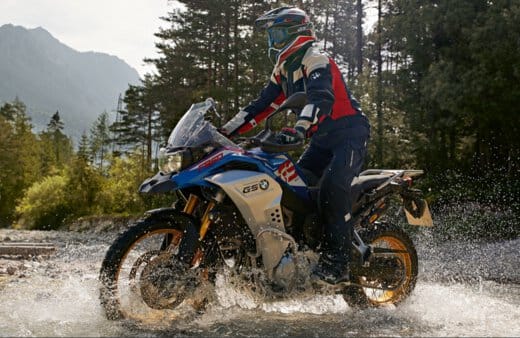
Adventure bikes - manufacturers and models
Adventure bikes have been growing in pouplarity for some time now, arguably with the help of such names as BMW with their GS 1000 Adventure models and the like, with almost every major manufacturer of note offering something in this general category.
BMWs range from the older but still viable F650GS to their current offerings - G310 GS, F750GS, F850GS, F850 GS Adventure, and their R 1250 variations - solid bikes (I’ve owned an older F650) in general, but certainly at a cost premium which can also extent to parts prices. I rode my F650 (non-GS) all over the place, including some airborne time on it. It was a nice overall bike, handled well on the road, although my model was a bit under-powered and of course, heavier and less suspension-capable then my DRZ400S, but the newer GS models are quite competent - in their elements.
Triump also plays here, with their generally well-regarded but not-inexpensive Tiger series.
Suzuki has self-declared their V-Strom series of bikes as their Adventure offerings in 650 and 1000-1050cc variantions, although one might consider the DR650 to straddle both slots of both dual-sport and adventure bike.

Honda, on the other hand, at least on their website, does something smart here - they have both Off-road and Street categories, but they show some overlapping models - showing Adventure models under both street and off-road categories. The CB500X and XR650L might also straddle the dual-sport and Adventure categories a bit, while the NC750X and Africa Twin are more squarely in the take on BMW in the bigger adventure touring bike category.
Meanwhile, Kawasaki has their Versys series in 300, 650 and 1000cc models, although I’d argue their very long-running KLR650 model also straddles the dual-sport and adventure categories.
Yamaha has their own relatively long-running model in the Tenere and Super Tenere and while the Tenere has not always been available in the US, the model itself has existed for decades.
Adventure bikes - what they do well and not so well
Adventure bikes are a pretty versatile collection, acknowledging that overall they range from more off-road to more on-road focused as a group. Add a pannier system to the bikes, along with an aftermarket seat, and they can make for great touring/trip bikes.
Jump on with a tank bag to hold your laptop or miscellaneous, and they make for great around town or commuter bikes, with enough power to make it fun, and enough handling to again - make it fun.
While they’re not up to dedicated race/sport-bike levels of performance, they generally do a good number of things well to well enough to make them a solid all-rounder consideration.
Considerations for both Adventure and dual-sports
The most difficult thing to work out when both Adventure and dual sport bikes are in consideration is simply what you are really going to do with it. The offerings out there range from able to do high(ish for adventure models) jumps and heavy mud and sand, to street bikes able to take on a bit of gravel.
Lighter weights help you off-road, while heavier weights help for on-road and longer-duration trips. A few hours to a day can be handled by any bike, but trips of a few days to longer really benefit from a solid rear frame or attachment system for a rear pannier system.
How far between stops is another consideration - the dual-sports generally come with a seat that feels like sitting on plywood. The adventure boke seats are better, but still in need of aftermarket replacement seats for anything more than a few hours, IMO. Gas tank size can also become an issue for those really doing trips ‘across the wild or unknown.’
Those with more of an on-road or on-road plus gravel and heavy packed dirt may be less concerned with engine guards, brush guards and the like, while those doing more off-road - they become almost mandatory. You really don’t want to have a trip ruined by a rock punching throug hthe engine casing, or smashing up fingers by smacking into a branch. Some of the models out there lean between off-road and touring/on-road, while some others are more touring-focused.
Note that adding panniers, tool kits, engine guards etc. all add some additional weight to the bike, so consider not only the primary use of the bike, but also how much weight is added in gear, clothes, tools, etc. Thankfully, there are a fair number of manufacturers out there for many of the bikes focusing on lighter-weight gear, while you can look at lightweight camping and backpacking gear for other specific things needed for trips.
The more road-use, or in particular, highway usage - in general, the larger CC/engine size needed, with the bare minimum, to me, being at least 350-450cc or higher for any highway use.
The right combination of all-arounder, for me, having done a number of trips on several bikes, in and outside the US, would be a 650-700CC adventure bike, with reasonable suspension travel, but still - compromises are made. Likewise, even choices of tires can make a big difference - knobbies on the street aren’t the greatest and will wear quickly along with making additional noise, while pure road tires will make an otherwise capable-enough adventure bike miserable on gravel, let alone dirt. I’ve run Mefo Explorers for a while as an ‘ok enough compromise’ tire, but make sure to investigate dual-sport or adventure bike tires.
On the other hand, a 650-1000CC adventure bike also makes a great general-purpose all around motorcycle, even if/when not really going off-road. They can be kitted out easily enough with panniers for trips, are generally durable, and while not sport bikes, handle well.
Adventure bikes - beginner bikes
Any of the smaller bikes - BMW G310 or the Versys 300 stand out as candidates here, although for true beginners, I’d also consider some of the smaller dual-sports, if some amount of off-road or trail riding is in the plans.
For more experienced riders, I’m partial to the DR650, XL650, DRZ400S (technically dual-sports), but I’d also consider a Tenere 700 or (used) BMW again.
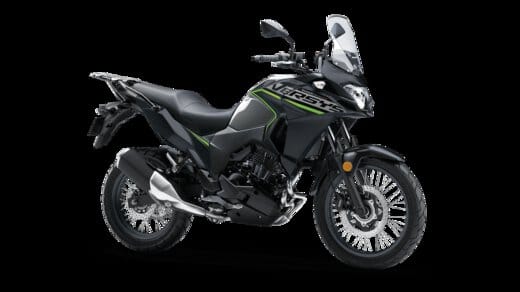
(Super) Sport Bikes
For some of you - this may be saving the best for last, while for others perhaps it’s an equally strong - who cares? Love them or hate them, the modern sport bike is an engineering and performance model to behold. Usually available in a 600CC or 1000CC model, with some exceptions - these are essentially race bikes ‘for the street.’
The ZX14R to the right can do 0-60 in under 3 seconds, and a quart-mile in under 10. From a ‘speed guy’’s perspective - this is damned cool.
They are also completely insane for all but the truly experienced rider.
No, a 600cc sportbike is not an appropriate ‘beginner bike,’ no matter what your friends may tell you.
Sport or Super Sport bikes are the epitome of motorcycle performance - as such, they handle extremely well - in the hands of a skilled rider. They may have unique quirks and twitchy throttles not suited for inexperienced riders. They are indeed an awesome feat of engineering and performance but I’m going to leave it at this - how fast is reasonable on public roads in reality? I’m saying this as a car and motorcycle aficionado, but doing 160MPH+ on public roads - just isn’t the best of ideas. To be clear - I love sport bikes, but do not recommend them for any new to mid-level rider, ever - nor do I even own one myself currently.
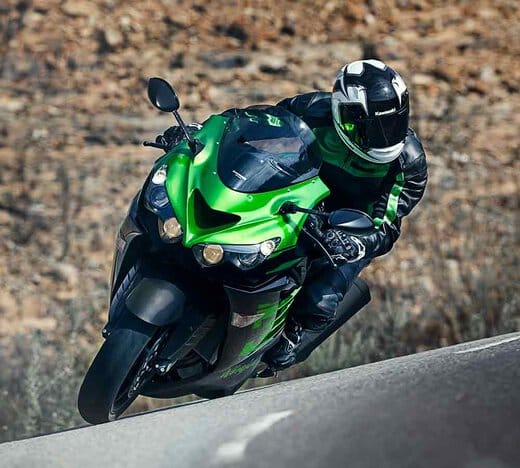
Sport bikes - what they do well and not so well
Simple - pure performance from straight line 0-60 and quad-mile times to top end speeds, as well as the ultimate in leaning over hard in incredibly fast turns - is what they do well in the hands of an experienced rider. What they also do is tend to be the larger contributor to acceidents and injuries on motorcycles - and not just the riders.
What they don’t do so well - cruising and longer rides or trips. Some can pull if off, but the forward leaning riding position, along with generally having seats only dirt-bike riders would call ‘nice,’ they just don’t make for long trips all that well.
Sport Bikes - beginner bikes
So while in my opinion, there’s no such thing as a true beginner sport bike, there are some closer than others - that look at the part and are pretty quick and nimble overall. Over time, some manfuacturers have started to differentiate between the nearly-bred-for-racing bikes as ’supersports’ and the ‘merely fast and agile’ as ’sport’ bikes, but it’s not universal.
A solid recommendation in my opinion is for either an older Ninja 500, or the current generation Ninja 400 The former can still do 0-60 in under 5 seconds and pull a 13 second quarter mile, while the latter
Either one has a more standard, upright seating position, while still effectively being both a decent beginner’s bike with a degree of caution being exercised, as well as suitable for experienced riders as well. A good friend of mine picked up a Ninja 500 at my urging and he’s happily had it for years now without growing out of it, while I have my SV650 ‘naked’ version as my own primary bike today
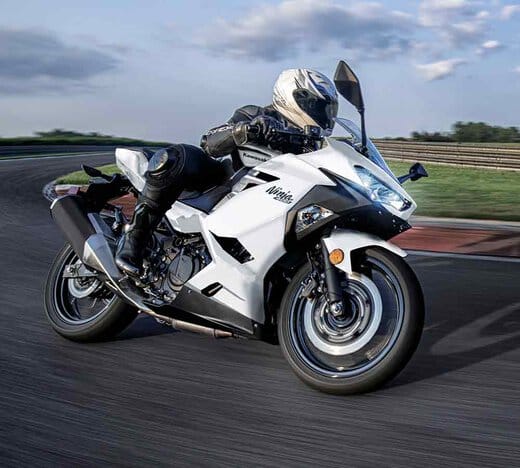
Touring and Sport Touring Bikes
In the last category I’m going to cover, I’ll admin - I’m blurring the lines a bit.
Touring bikes in some cases are effectively ‘big cruisers’ with extra attention paid to longer-duration riding and trips, such as the Harley Davidson Electra Glide or the Honda Goldwing, or other bikes generally with 1200cc or more like the Vulcan 1700.
These are, to be clear - pretty heavy bikes in the 650lb and up category, some have reverse gears, and they are pretty well focused on that long cross-country type of ride. Thing along the lines of cruisers - relatively stable, but not very nimble or quick to stop on a dime, but - bigger, and also potentially more comfortable for those long rides. Some have multiple speakers to go with the reverse gear, while rider comfort and storage is a consideration from the start.
The Sport Tourer class was almost created by one bike in my mind, the Yamaha FJR , which is still going strong today. It’s not an underpowered bike at ~150HP sitting on a supersport frame, but given it’s weight and dimensions, it also isn’t a ‘pure’ supersport bike, either as it won’t quite handle, speed up, or brake like them head to head. I expect one of these days - I just might wind up with an FJR, actually.
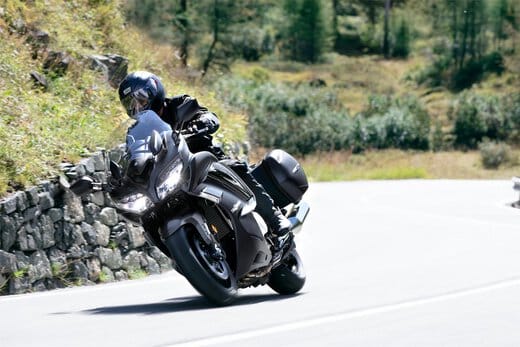
Meanwhile - there are others to consider as well. If there are cruising-based touring bikes, and sport-based touring bikes. Some of the bigger Adventure bikes, like the Triumph Tiger 1200 or BMW R 1200 or 1250 GS - with suitable front fairing for wind protection, might also be considered ‘tourers’ with a bit of an adventure bent to them, or the BMW R 1250 RT or the very road-focused BMW K 1600 series.
And - that’s a wrap!
There’s a type of bike out there for nearly everyone, but unfortunately still no easy ‘one bike to do them all,’ no matter how many of us have tried to find that elusive ideal.
Whether you’re a new or experienced rider, one of the best things you can do is deciding how you will really and predominantly be using your motorcycle - a BMW R 1250 might seem beautiful (and it is), but it may not be the best fit for your daily commute involved a ride over some fire roads.
Be realistic, in your use as well as your own skill levels, and keep the shiny side up!
